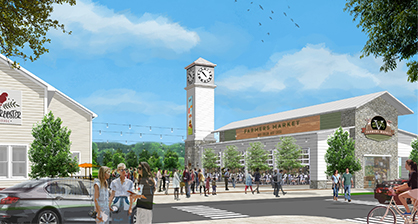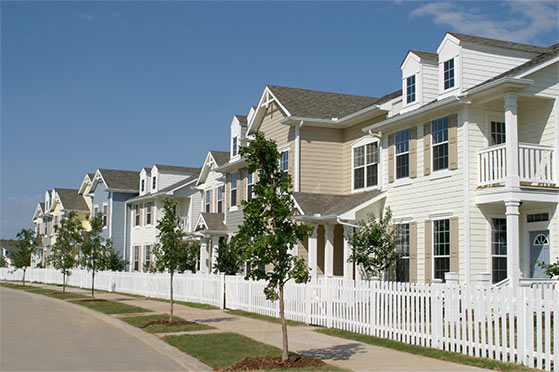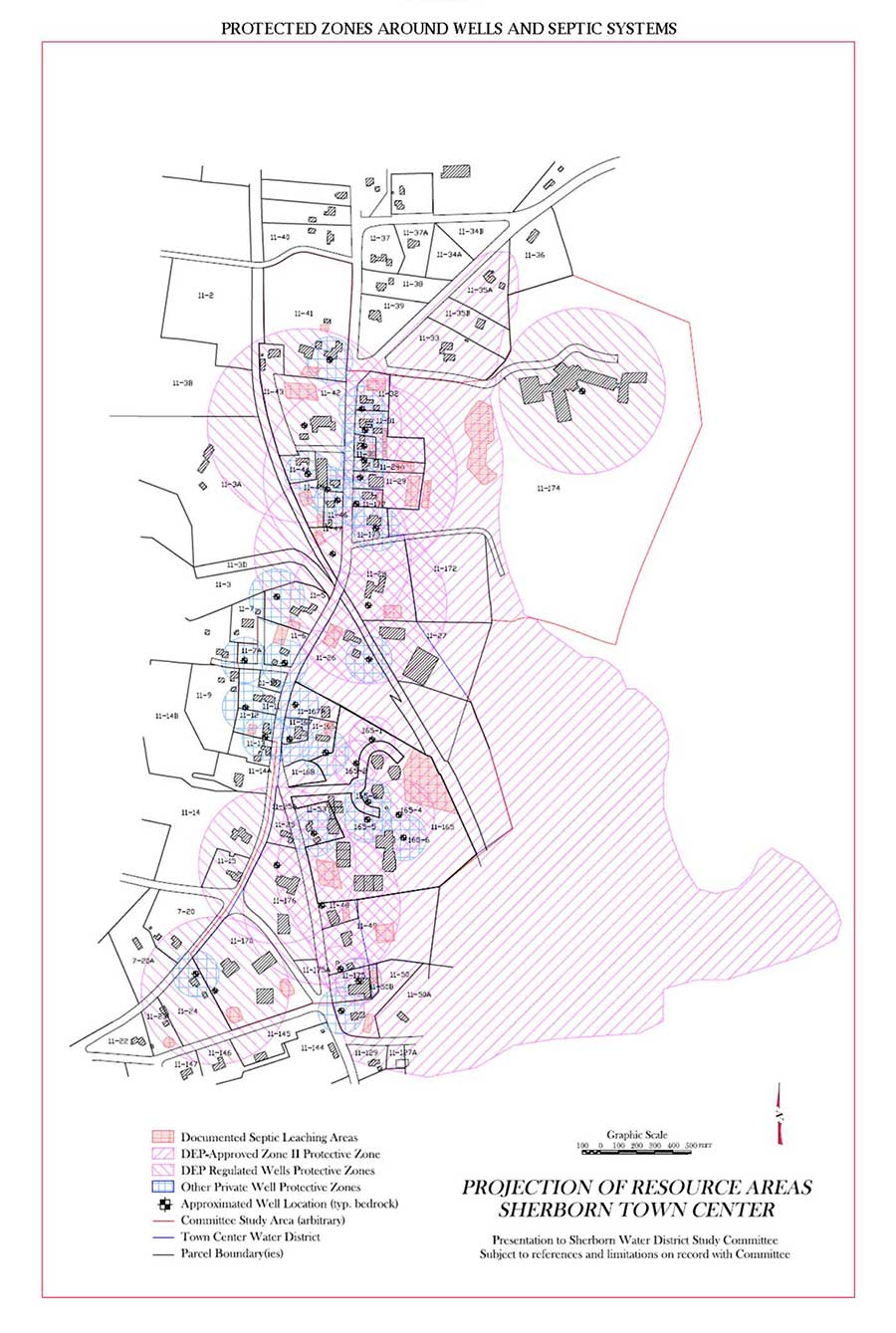Sherborn town center


VISION FOR THE FUTURE
Sherborn Town Center will maintain its legacy as a historic rural village with inviting gathering places, safe pedestrian walkways and bicycle routes, and successful small businesses that contribute to the socia vitality and fiscal stability of the town.
Town Center in Perspective
Sherborn Town Center in the seventeenth and eighteenth centuries comprised a collection of houses, small shops, taverns, and inns along a dirt road. Through its more than 300 year history, it has continued to evolve, as it does up to the present day. In recent decades the Community Center, Town Hall, fire station, Clark House, the old library, and historic homes were restored and, in some cases, repurposed. Elderly- and affordable-housing complexes, Woodhaven and Leland Farms, the police station, Pine Hill expansion, 20 N. Main commercial building, and a few individual private homes were added. The Abbey Road age-restricted development is a recent example of positive change in the Town Center. At the same time, a small market and a sandwich shop, both valued services and meeting places, have been lost. Recognizing that change is inevitable, the goal is to guide it toward our shared vision of the future Town Center.
Charting the Future
Surveys conducted over the past decade have shown broad agreement that the Town Center should remain small and retain its New England–village atmosphere. In particular, the historic homes and buildings provide an enriching link to the past and are highly valued components of the area. Beginning with the 1958 Master Plan, they have driven many planning efforts aimed at improving the social and financial vitality of Sherborn Town Center. Over the years town boards and committees have repeatedly grappled with these issues, as evidenced by the 1971 Town Center Study, the 1975 Master Plan, the 1981 report of the Zoning Study Committee, the 1989 Town Center Master Plan, both the Livability Charrette and the General Plan of 2001, the 2004 Community Development Plan, and the 2007 Final Report of the Town Center Water District Workgroup. In 2011, the Planning Board produced a draft report, “Sherborn Town Center: At a Crossroads,” which analyzed in detail the constraints and possibilities for addition of businesses and housing (Town of Sherborn 2011). In 2016, the Metropolitan Area Planning Council (MAPC) analyzed possible options for additional housing in the Town Center.
Plans for enhancement of the Town Center repeatedly run up against now-familiar constraints. For example, the area is served by multiple wells and septic systems that are not sufficiently separated. This represents a potential health risk for existing businesses and homes and leaves little room for expansion. Despite ongoing fact-finding and analysis, the best options for assuring the safety of Town Center water supplies remain unclear. In addition, most Town Center properties are not town owned, and business owners naturally have their own priorities. Finally, no town-wide consensus exists regarding the type and extent of change desired.
The ongoing challenge is to move from long-range planning to specific, realistic actions that can be taken to materially improve our Town Center in the short, medium, and long terms. To that end, Goals I, II, and III of this section of the General Plan all follow a practical progression that begins with preservation, moves to readily feasible improvements, and then to positive changes that are possible within the present water and septic infrastructure. Finally, Goal IV seeks to establish a logical framework for evaluating and agreeing upon the more significant changes that residents desire. A prerequisite for such change is a detailed definition of the costs and benefits of a Town Center water and/or wastewater infrastructure and to determine how to move forward. The goals and recommendations outlined below are guided by the overarching principle that any change must be consistent with our vision of a vibrant Town Center with an inviting village atmosphere.
GOAL I
Preserve the most valued features of the existing Town Center.
Recommendations
- Actively promote the preservation of those selected historically significant private properties in the Town Center district that are important in telling Sherborn’s “story.”
- Maintain historic municipal buildings and structures to ensure the preservation of their appearance and function into the future.
- Continue to support the integration of recreational fields, resources, and activities in Town Center.
- Consider roadway changes to preserve scale and feel of a rural village.
- Protect Sherborn’s village character by establishing design-review guidelines for renovations and new buildings and structures in the Town Center.
GOAL II
Enhance the social vitality and function of the existing Town Center through incremental improvements.
Recommendations
- Create a more walkable Town Center guided by the Complete Streets Program.
- Make Sherborn Town Center truly bicycle friendly.
- Enable social gathering in the Town Center through design and builtenvironment features.
- Improve the resources and amenities in Sherborn Center for all users.
GOAL III
Support current businesses and consider new business and housing opportunities in the Town Center within existing infrastructure constraints.
Recommendations
- Explore market opportunities and financial costs/benefits that may be achieved both under current conditions as well as after specific improvements in the Town Center.
- Make the existing Town Center more visually appealing.
- Maximize accessibility to all Town Center businesses and destinations while minimizing the need to drive between sites.
- Encourage and support the Board of Health in addressing current and potential water/sewer needs of individual properties in the Town Center.
- To the extent allowed by current well and septic technology, enable new business and housing options in Town Center.
- Examine and consider changing certain zoning restrictions as they apply to Town Center businesses.
GOAL IV
Develop a realistic, comprehensive long-term plan for the Town Center that addresses those challenges selected for action but not met by the incremental changes described in Goals I–III.
In surveys conducted over the past decade, many residents have expressed overall dissatisfaction with the amenities and resources currently available in the Town Center. All agree that large, so-called chain stores do not belong in Sherborn, but many feel that addition of smaller businesses, such as a coffee shop/cafe, small restaurants, and shops would add to Sherborn’s vitality and attractiveness. The surveys reveal, however, a broad agreement that the Town Center should remain small and retain its New England–village atmosphere.
It is reasonable to assume that enhancement of social and commercial activity in its Town Center will support Sherborn’s overall financial health by enhancing the desirability of the town and improving property values. However, plans for enhancement run up against the fact that commercial properties are privately owned and therefore not under town control.
Residents’ wishes aside, the potential viability of specific types of new businesses in Sherborn’s small Town Center is not known. Most important, current capacity and future expansion of businesses are severely limited by the lack of a safe public water supply and wastewater systems.
Water and septic issues
For many years, especially since passage of Massachusetts Title 5 regulations in 1995, it has been recognized that some properties within the Town Center (businesses, residences, public buildings, and churches), although grandfathered under Title 5, have yet to be updated to meet current state regulations for separation of wells and septic systems. As is the case in many old New England villages, locations of many Town Center wells and septic fields, which were installed many years ago before today’s stricter regulations were in place, no longer would be allowed, and they pose a
potential health risk. Options for current businesses are limited as there is little room for expansion of septic capacity. Indeed, ground water supplies are currently vulnerable to contamination by existing septic systems. Map below, shows that almost all the septic leaching areas (solid red) in the Town Center area lie within the “protected zones” surrounding public or shared wells (cross-hatched pink) or private wells (cross-hatched blue). Under Title 5 regulations, new wells or septic fields with such overlap are not allowed. Septic contamination of Town Center well-water is not only a potential health threat, it could threaten town finances by forcing expensive emergency infrastructure remediation that is not included in the overall Town Center plan.

At the May 2007 town election, a nonbinding question on the ballot—“Shall the town encourage the formation of a public water and/or sewer system to service the current Business District?”—passed by a 2-to-1 vote. A report proposing a Town Center Water District was compiled and submitted by the Sherborn Business Association and interested residents to the SB. The report recommended the Selectmen's Board consider establishment of a water district and water delivery system within the Town Center that would alleviate that area’s water quality and quantity challenges, which were posed by the private and public properties concentrated there.
In May 2014, the Selectmen's Board formed the Town Center Options Committee (TCOC) to study the technical and financial options available to add water supply and/or wastewater treatment systems. The committee continues to work with technical and legal consultants to provide data to the town’s governing boards so that informed decisions can be made. On balance, the data show that the Town Center’s further development is constrained by both septic disposal capacity and water supply. Data on the technical feasibility and costs of various options are under continued analysis. The town has a successful, but small, test well located off Morse Road in the Price Woodlands Conservation Land. It will require extensive testing at the requisite flow that complies with state regulations. A water system could include that well, a water tank on Pine Hill, and the existing fire main to deliver water to a water district restricted to the Town Center. Possible alternative sewage systems range from small-scale approaches that take the liquid from existing septic tanks to a remote shared recharge area via small plastic pipes to a wastewater treatment plant.
The successful solution will depend on the residents’ ability to define and agree upon specific additions and changes that are consistent with their shared vision of the future Town Center. This vision must be tempered by realistic analyses of the short- and long-term costs of the required infrastructure, the market viability of desired new businesses and/or housing, and the overall financial impacts on the town. To this end, actions proposed below in Recommendations B, C, and D, may proceed concurrently. This goal is aimed at putting these prerequisites in place and reaching consensus on the way forward.
Recommendations
- Develop a shared vision of the “ideal” Town Center that includes the range of desired improvements and changes.
- Analyze how contributions of specific business types and housing options deemed desirable and viable will affect the long-term financial sustainability of the town.
- Support and guide the TCOC with resources needed to complete the analysis of the technical feasibility and projected costs of installing and maintaining a public water and/or septic system within a strictly limited Town Center district.
- Evaluate the financing options for a public water and/or septic system within a strictly limited Town Center district.
- Decide whether to proceed with development of Town Center water and sewer infrastructure as part of a broad Town Center plan.
- Decide whether to proceed with development of Town Center water and sewer infrastructure as part of a broad Town Center plan.
Contact us
Thank you
We will contact you promptly
You can also address your questions and
suggestions to town officials:
George Morrill
Charles Yon
Paul R. DeRensis
Eric Johnson
Jeff Waldron
John Higley
Addie Mae Weiss
Marian Neutra
Chris Owen
Will Dunham
Grace Shepard
Gino Carlucci
Daryl Beardsley
Matthew Vitale
David Sossen
Town Center Options Committee
Roger Demler
Business Association
Alex Dowse
Edward Rose